I know everyone is trying to cut weight from their hiking packs in an effort to go ultralight. But, there is such thing as “stupid light.” It’s really not worth saving a few ounces if it means you put your safety at risk or will end up having a miserable hike.
Here are some of the most important backpacking items that hikers forget to bring – or purposely leave out – but you should really carry.
1. Extra Food
Bring at least one day’s worth of extra food with you, especially if you are hiking far from civilization. Then it won’t be a big deal if you accidentally knock over your pot while cooking dinner because you will have a backup meal. Or you won’t be stressed about taking an extra zero day to nurse your sprained ankle since you’ll have that meal to hold you over.
Yes, I know you can survive 3 weeks without food. But would you really want to? Better to enjoy your hike than suffer through hunger because you wanted to save some weight.
2. Seasonings
Eating ramen, pasta and other instant foods gets boring really quickly. Spices are an easy way to make your meals more exciting. They weigh next to nothing and are easy to pack.
3. First Aid Items
So, you’ve been backpacking 100 times but never needed anything from your first aid kit? Well, if you do need it, you will really need it!
Most pre-packed first aid kits are missing lots of items (they always have 100 band aids but no diarrhea meds!). I made my own kit with items to cover all of the major and inor things which could go wrong. See my lightweight backpacking first aid kit here.
4. Tick Tweezers
Because of global warming, tick season is getting longer and their range is getting bigger. Ticks spread all sorts of nasty diseases which can seriously mess you up! But the good news is that your chances of getting tick-transmitted disease is very low if you remove a tick within 24 hours.
But you’ve got to remove the tick properly. That means with fine-tipped tweezers so you can grasp it low.
5. Safety Pins and/or Sewing Kit
While it’s never happened to me, I’ve heard many stories of mice and other critters chewing through gear bags that smelled like food. A sewing kit would come in handy to sew up torn gear. At the very least, pack a few safety pins for fixing holes in gear bags. You can also use safety pins for removing splinters.
6. Nail Clippers
The scissors on multi-tools never work well for cutting finger and toenails. And you definitely you’re your toe nails cut well when hiking for hours each day!
7. Duct Tape
Wrap some duct tape around your trekking poles or lighter. It doesn’t weigh much and has a zillion uses, like:
- Fixing the sole which fell off your cheap boots
- Stabilizing a sprained ankle
- Repairing holes in gear
By the way, gear failures are often the start of backpacking horror stories. Like when your Camelbak hydration pack bursts and your down sleeping bag gets drenched. Or your self-inflating sleeping pad gets punctured, leaving you exposed to cold ground. Duct tape can fix a lot of gear failures but not everything. You might also want to bring a bit of Seam Grip and Tenacious Tape just in case.
8. Bright Clothing
If backpacking in the USA, there are a lot of morons with guns. Including morons who are illegally hunting. I even read one story at Reddit of a hiker who got shot in Wyoming because the other guy heard him, thought he was a bear, and shot out of fear.
The moral? Wear bring-colored clothing. Preferably with reflective strips. And definitely have trauma items in your first aid kit.
9. Extra Rope or Line
I always carry rope when backpacking so I can hang my food (critters are an even worse threat than bears where I live). But rope is also really useful in other situations too. Like,
- Fixing a broken bootlace
- Hanging clothes to dry
- Tying an improvised splint around a fractured limb
- Rigging up your tent when a pole snaps…
10. A Few (Extra) Water Purification Tablets
If you use a water filter, bring a few water purification tablets with you as a backup. It is rare, but filters can sometimes break. The tablets weigh almost nothing and are a lot more convenient than having to boil water to purify it. If you are already using tablets, then carry a few extras.
11. Extra Water
Yes, water is really heavy. But it’s smart to carry more than you think you need before the next refill. With the climate getting warmer, even some “reliable” water sources are drying up. Or something like this might happen to you.
“I was banking on a water-source during a particularly long, dry and hot section of trail. Made it to the source only to find there was a bear with a shitty attitude who decided he wasn’t going to share nor had any interest in moving on. I had to continue on…Started getting light-headed, dizzy and nauseous. Eventually made it to camp which had a stream; water never tasted so good.”
12. Fire Starting Kit, with Backup
Fire is one of those things that can really make a difference in life-or-death situations. Like if all your gear gets drenched and you start getting hypothermic. Or you are completely lost and need to signal for help. Or you have no other way to purify water… So pack a little fire starting kit.
The kit should include a lighter and some dry tinder (I use dryer lint coated in Vaseline). Have a backup lighter or waterproof matches – but store the backup separate from the kit! If you drop/lose/forget your kit, at least you’ll still have the backup.
On that note, it’s also useful to know how to make a fire in the rain.
What other important-but-forgotten gear would you add to this list? Let us know in the comments section below.
“First Aid & Emergency Repairs” (CC BY-NC 2.0) by azoeart
“My feet hurt” (CC BY-NC-ND 2.0) by badenton


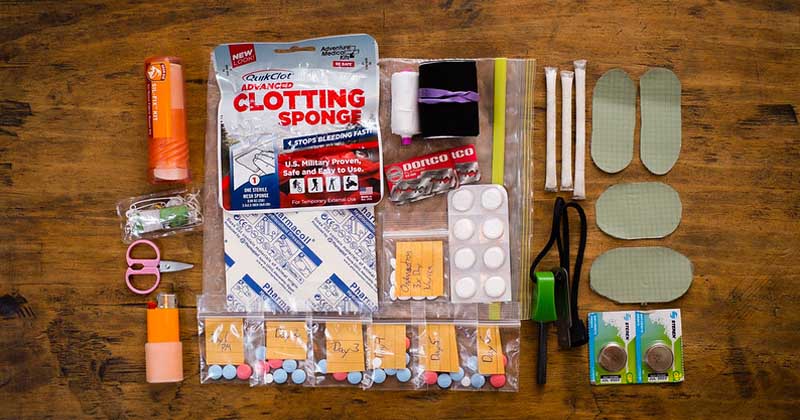
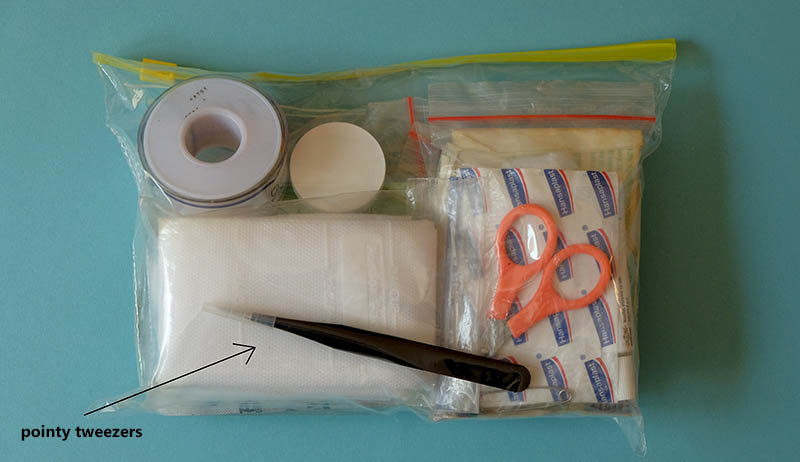
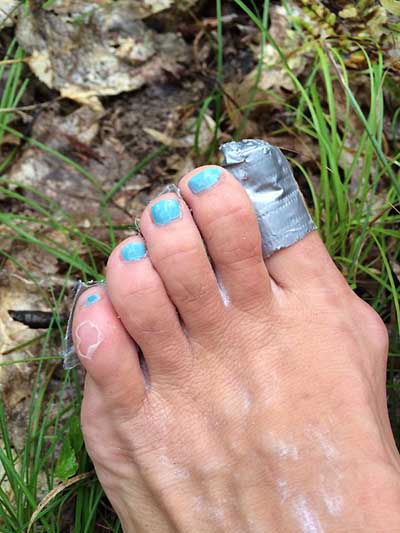
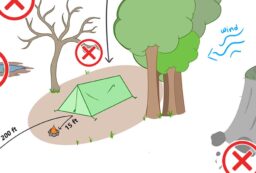
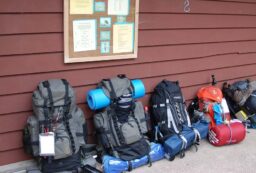
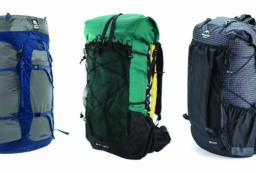







Post your comments